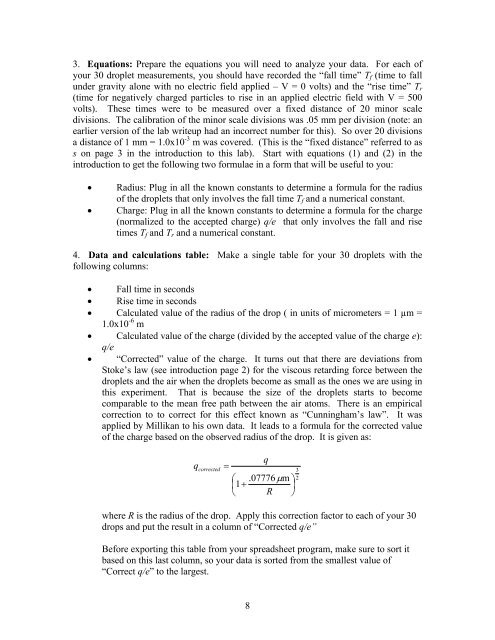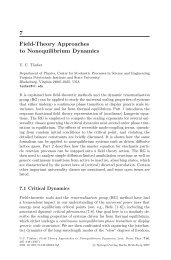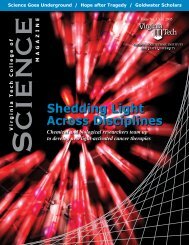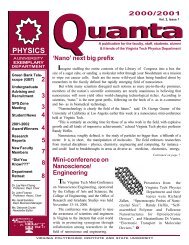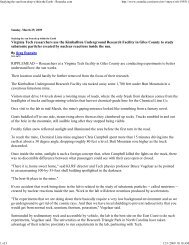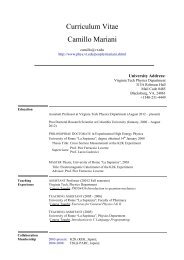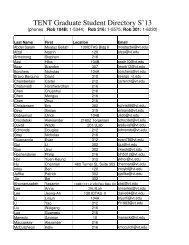Millikan writeup - Physics
Millikan writeup - Physics
Millikan writeup - Physics
You also want an ePaper? Increase the reach of your titles
YUMPU automatically turns print PDFs into web optimized ePapers that Google loves.
3. Equations: Prepare the equations you will need to analyze your data. For each of<br />
your 30 droplet measurements, you should have recorded the “fall time” T f (time to fall<br />
under gravity alone with no electric field applied – V = 0 volts) and the “rise time” T r<br />
(time for negatively charged particles to rise in an applied electric field with V = 500<br />
volts). These times were to be measured over a fixed distance of 20 minor scale<br />
divisions. The calibration of the minor scale divisions was .05 mm per division (note: an<br />
earlier version of the lab <strong>writeup</strong> had an incorrect number for this). So over 20 divisions<br />
a distance of 1 mm = 1.0x10 -3 m was covered. (This is the “fixed distance” referred to as<br />
s on page 3 in the introduction to this lab). Start with equations (1) and (2) in the<br />
introduction to get the following two formulae in a form that will be useful to you:<br />
<br />
<br />
Radius: Plug in all the known constants to determine a formula for the radius<br />
of the droplets that only involves the fall time T f and a numerical constant.<br />
Charge: Plug in all the known constants to determine a formula for the charge<br />
(normalized to the accepted charge) q/e that only involves the fall and rise<br />
times T f and T r and a numerical constant.<br />
4. Data and calculations table: Make a single table for your 30 droplets with the<br />
following columns:<br />
Fall time in seconds<br />
Rise time in seconds<br />
Calculated value of the radius of the drop ( in units of micrometers = 1 µm =<br />
1.0x10 -6 m<br />
Calculated value of the charge (divided by the accepted value of the charge e):<br />
q/e<br />
“Corrected” value of the charge. It turns out that there are deviations from<br />
Stoke’s law (see introduction page 2) for the viscous retarding force between the<br />
droplets and the air when the droplets become as small as the ones we are using in<br />
this experiment. That is because the size of the droplets starts to become<br />
comparable to the mean free path between the air atoms. There is an empirical<br />
correction to to correct for this effect known as “Cunningham’s law”. It was<br />
applied by <strong>Millikan</strong> to his own data. It leads to a formula for the corrected value<br />
of the charge based on the observed radius of the drop. It is given as:<br />
q corrected<br />
q<br />
<br />
.07776m<br />
<br />
1 <br />
R <br />
3<br />
2<br />
where R is the radius of the drop. Apply this correction factor to each of your 30<br />
drops and put the result in a column of “Corrected q/e”<br />
Before exporting this table from your spreadsheet program, make sure to sort it<br />
based on this last column, so your data is sorted from the smallest value of<br />
“Correct q/e” to the largest.<br />
8


